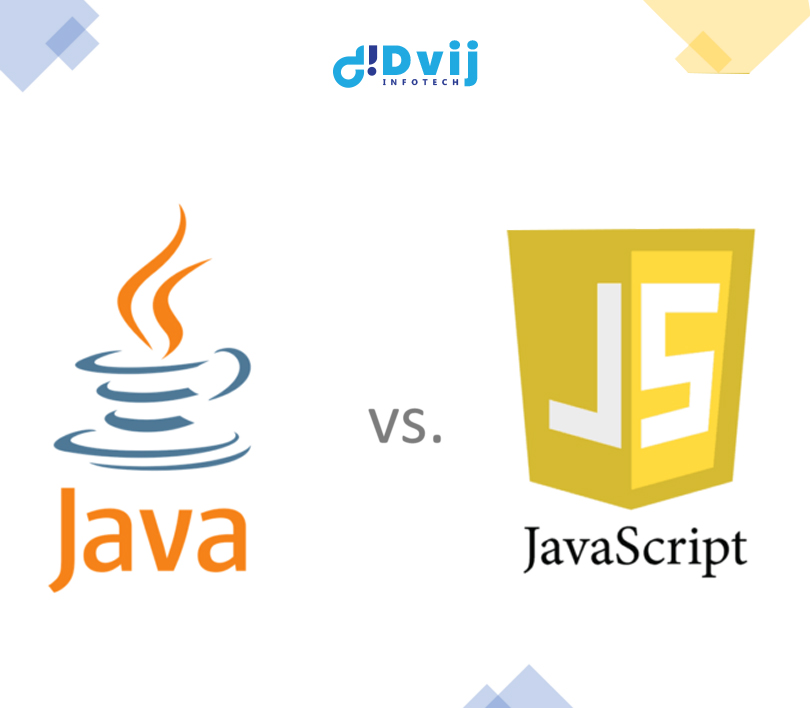They are two completely differences between java and javascript. one is a general-purpose programming language, and the other is an HTML scripting language. Even though JavaScript allows you to accomplish a lot of cool things, it lacks features like multithreading when compared to Java.
By the way, JavaScript was initially known as LiveScript, which could be owing to the fact that it keeps your HTML pages alive, and the programming world would be much clearer if Netscape hadn't renamed LiveScript to JavaScript.
For programmers, there are ten differences between Java and JavaScript.
Java and JavaScript have always been a source of confusion among programmers, developers, and internet users. Many people still believe that JavaScript is included in the Java platform, which is incorrect. In reality, JavaScript has nothing to do with Java; the only thing they have in common is the name "Java," much as Car and Carpet has nothing to do with Grapefruit. Netscape, Inc. created JavaScript, a client-side scripting language for HTML, whereas Sun Microsystems created Java, a programming language. James Gosling, also known as the "Father of Java," is the creator of the Java programming language.
While it would be inaccurate to refer to JavaScript as a client-side scripting language in today's environment, it is currently employed in servers that use nodes. People are using JavaScript to accomplish object-oriented development, but that is not how it was designed.
Differences between Java and JavaScript ways, including how they are written, compiled and executed. Even Java and JavaScript have a wide range of capabilities. Java is a feature-rich object-oriented programming language that is utilized practically everywhere, from credit card programming to server-side coding.
Java is a programming language that is used to produce Android apps, Swing is a Java API that is used to create desktop applications, and Java EE is a Java platform that is used to generate web and enterprise applications.
JavaScript, on the other hand, is generally used to add interactivity to websites. While there are other options, such as Flash, JavaScript is the most popular and is regaining ground with the release of powerful and easy-to-use libraries like jQuery and jQuery UI.
JavaScript can be used to validate user input, produce animation and cool effects on an HTML page, and do a variety of interactive tasks, including reacting to button clicks, mouse movement, and image click.
What is the difference between Java and JavaScript?
Here is my list of important programming language differences between JavaScript and Java. We worked on both of them, largely utilizing Java for server-side programming and Android for client-side scripting including validation, interaction, animation, and ajax qu
Environment of Execution
The first difference between Java and JavaScript is that Java is a compiled + interpreted language, meaning that Java code is first compiled into class files containing byte code before being executed by the JVM. JavaScript code, on the other hand, is directly executed by the browser.Another distinction is that Java is executed inside a JVM and requires JDK or JRE to run, but JavaScript is performed inside the browser and is supported by practically every modern browser.
Typed languages: Static vs. Dynamic
Another significant distinction between JavaScript and Java is that JavaScript is a dynamically typed language, whereas Java is statically typed. This means that variables are created with type at compile time and can only accept values that are allowed for that type; on the other hand, variables are formed with the var keyword in JavaScript and can accept a variety of values, such as Strings, numerics, and booleans, among others. In Java 8, it's quite simple to develop expressive code that isn't cluttered.
OOP (out of the box) Although JavaScript supports classes and objects, it is more akin to an object-oriented scripting language. In comparison to JavaScript, it is significantly easier to structure the code of large enterprise systems in Java. Java offers packages to bundle relevant classes together, as well as improved deployment control via JAR, WAR, and EAR.
Run Anywhere At Any Time
To achieve platform independence, Java employs byte code; JavaScript runs directly in the browser, however, programming written in JavaScript is vulnerable to browser compatibility issues, i.e. Certain code that works in Mozilla Firefox may not be compatible with Internet Explorer 7 or 8. This is due to JavaScript's browser-based implementation. Until jQuery came along, this was a terrible situation.
It's a JavaScript package that alleviates browser compatibility difficulties for web developers. This is why I prefer to write code with jQuery rather than plain old JavaScript, even if it's just retrieving DOM items using the getElementById() or getElementByName() methods.
Scoping by Block vs. Scoping by Function
Java mostly employs block-based scoping, which means that a variable is no longer in scope once control leaves the block unless it is an instance or class variable. JavaScript, on the other hand, mostly employs function-based scoping, in which a variable is only available within the function in which it is declared. In JavaScript, if a global variable and a local variable have the same name, the local variable takes precedence.
Constructors
Constructors in Java have certain unique qualities, such as function Object() { [native code] } chaining and ensuring that the superclass function Object() { [native code] } runs before the subclass function Object() { [native code] }; however, constructors in JavaScript are just another function. In JavaScript, constructors have no specific constraints, such as having no return type or having the same name as the class.
NullPointerException is thrown when a variable is null.
Because JavaScript is a dynamically typed language, it is far more forgiving than Java. There are no NullPointerExceptions in JavaScript, and your variables can accept a variety of data types.
Applicability
Last but not least, JavaScript has its own niche in Web development, coexisting with HTML and CSS, while Java is ubiquitous. Despite the fact that both have a large number of free source libraries to get started, jQuery has pushed JavaScript to the forefront.
